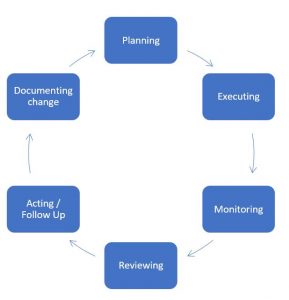Executing a project

Introduction
Executing a project is “the physical doing” part of the project. After initiating a project and spending time planning a project, it is time to begin. Project managers track the progress of projects, monitor against the plans (baseline plus changes) and take action to control the outcomes.
Project rarely go exactly to plan. Typically
- Tasks don’t get done, or;
- They are completed late, sometimes;
- They are completed early, or;
- New tasks emerge.
Executing requires constant managing and project managers must accept that key stakeholders, such as the client, usually want changes made. Some of these changes will be accepted, others rejected. Changes that are accepted are to be documented and become part of the continuously improving plan.
A Project Manager’s aim is to finish a project on schedule, within budget and to the agreed quality specifications despite unknown events that impact on projects. Part of the solution is to continuously improve the plan and communicate updates well.
Figure 1: The Continuous Improvement Cycle
(Pay attention to the detail in figure 1, it will help at your first checkpoint)

Managing Change (Traditional Model)
Alterations to the project scope requires the raising of a change request. This written document states why a change is required and what the change is. The project manager either accepts/rejects the change request or moves it to more senior stakeholders for a decision.

